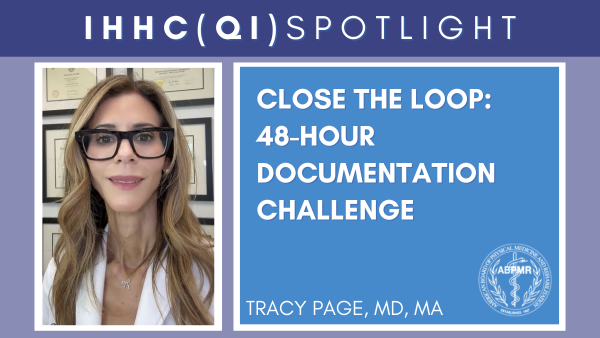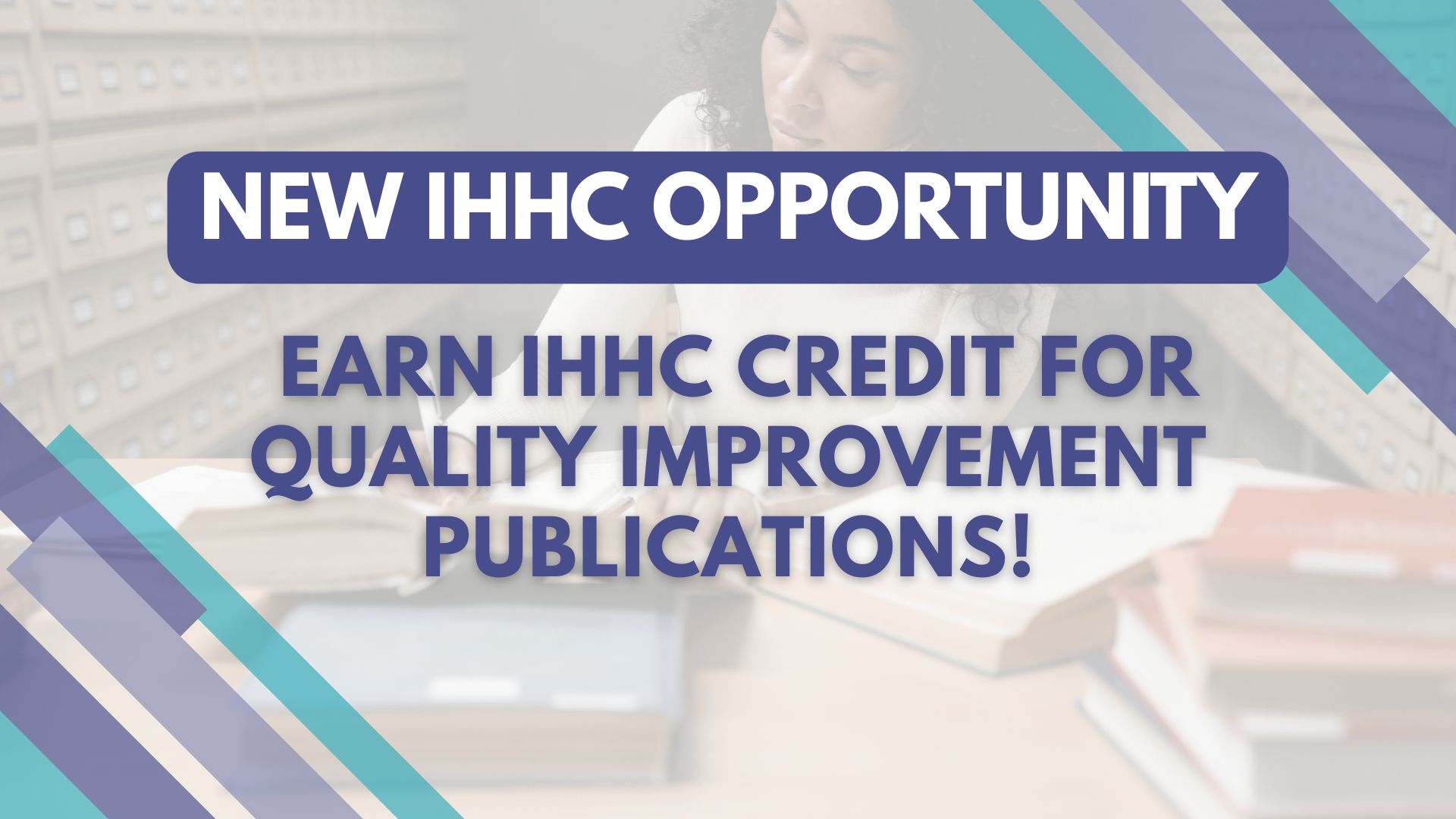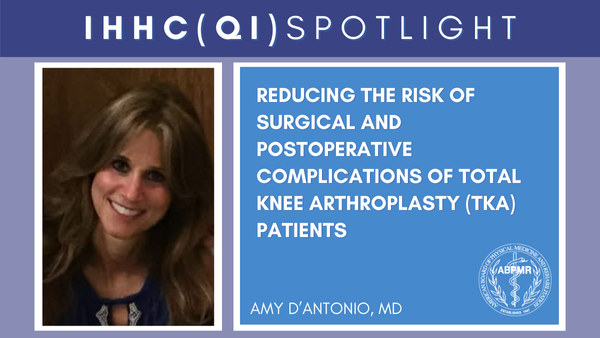CC
IHHC (QI) Spotlight: Close the Loop: 48-Hour Documentation Challenge

This month our IHHC Project Spotlight was submitted by Tracy Page, MD, MA.
Dr. Page is a Dr. Tracy Page is the founder of the Wisconsin Institute of Functional Medicine, where she specializes in Functional, Cellular, and Regenerative Medicine. She is triple-board certified and has completed fellowships in Anti-Aging, Regenerative, and Functional Medicine, as well as Interventional Spine and Sports Medicine at the Hospital for Special Surgery. She also holds advanced certification in Integrative Medicine from The George Washington University and earned a Master’s degree in Cell and Molecular Biology while attending medical school at Washington University. Active by nature, she is passionate about helping patients understand how they can take control of their health and change the way they age.
Thank you for submitting your project, Dr. Page!
The IHHC (QI) Project Spotlight is a periodic feature on the ABPMR News Center to highlight exemplary IHHC projects submitted by your fellow diplomates (or residents) for continuing certification (CC) credit. Diplomates can use the IHHC Project Spotlight as a tool to plan their own IHHCs or as a way to connect with other diplomates doing similar work.

What is the problem you are trying to solve?
Patient note documentation and closure were taking more than 48 hours to complete, and I wanted to ensure that all patient encounter notes were completed and closed within 48 hours from the time they were seen. Key players in completing notes include nursing staff (who enter lab results, medications, and referrals) and providers who see patients and create the plan of care.
What data (objective measurements) do you have that supports this as a problem?
We tracked the amount of time it took to close all encounter notes from May 2021 until May 2025.
What is your opportunity statement? State the goal you hope to achieve.
Our goal was to have > than 85% of all encounter notes closed within 48 hours by 2025.
What is the underlying cause of the performance/quality problem?
- Provider dependent (their ability to be efficient and stay on task).
- Nurse efficiency
- Software adaptability & accuracy
- Integration into our current EHR
- Utilization of a standardized format

What change(s) did you implement?
We used various methods to solve our problem:
-
Prepping notes before visits
-
Having nurses in the room with the providers to enter patient information in the HPI, enter supplements, medications, and orders.
-
Installing AI voice recognition software to help capture relevant information: HPI, history, physical exam, and plan of care. Plus, generating a task list for nurses to allow for follow-through & efficiency.

Did you achieve your goal or target from your opportunity statement? What data do you have to support your conclusion?
Comparison of notes closed >48 hours and <48 hours for each year
Year | Closed > 48 hours | closed < 48 hours | Total # of encounters | % of encounters closed < 48 hours per year
- 2021: | 360 | 97 | 457 | 21%
- 2022: | 350 | 3491 | 3841 | 91%
- 2023: | 1242 | 6096 | 7338 |83%
- 2024: | 1177 | 5630 | 6807 | 83%
- 2025: | 332 | 2683 |3015 | 90%

How will you maintain the success of your project going forward?
Our goal was to close > 85% of patient encounter notes within 48 hours by May 2025. Through strategic process changes including team-based documentation, pre-visit preparation, and AI-supported voice dictation—we achieved a 90% closure rate by 2025, meeting and slightly exceeding our target.
In 2021, only 21% of notes were closed within 48 hours, demonstrating a significant lag in the documentation workflow and reinforcing the need for systemic change.
Rapid improvement was achieved by 2022 (91%), primarily due to the early implementation of documentation support by nurses and structured preparation workflows.
A temporary decline to 83% in 2023 and 2024 suggests that process fatigue, documentation volume, or inconsistent use of tools may have impacted outcomes.
In 2025, after implementing AI voice recognition software, note closure rates improved to 90%, indicating that tech-enabled solutions can have a significant impact on performance.
This project demonstrated that transparent processes, team integration, and technological support are effective levers in improving documentation timeliness. While we met our 2025 goal, sustained success will require continuous evaluation, training, and system upgrades. Our renewed commitment to achieving 95% note closure within 48 hours aligns with best practices for documentation integrity, patient safety, and operational efficiency.

